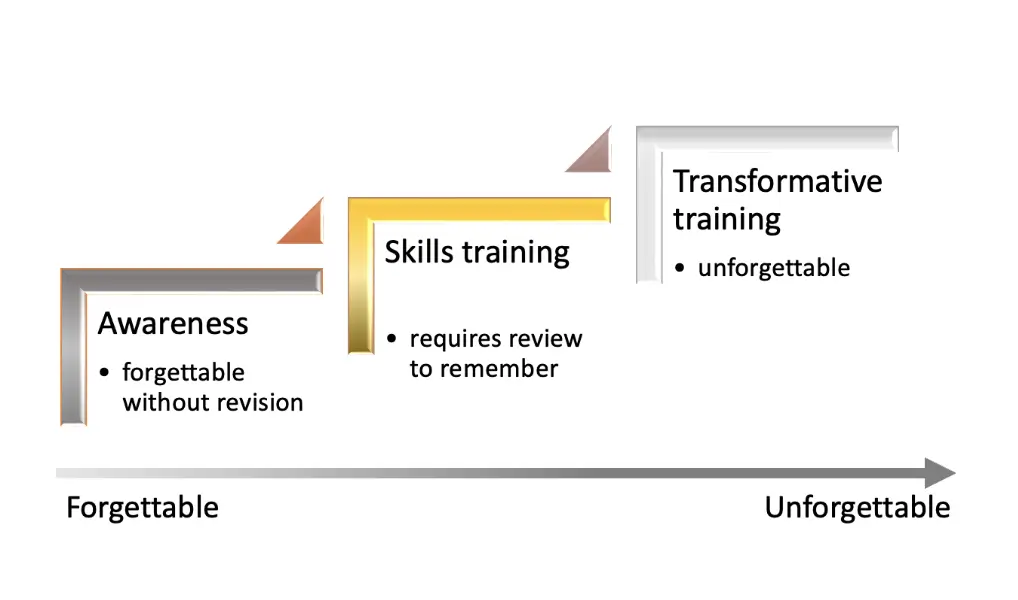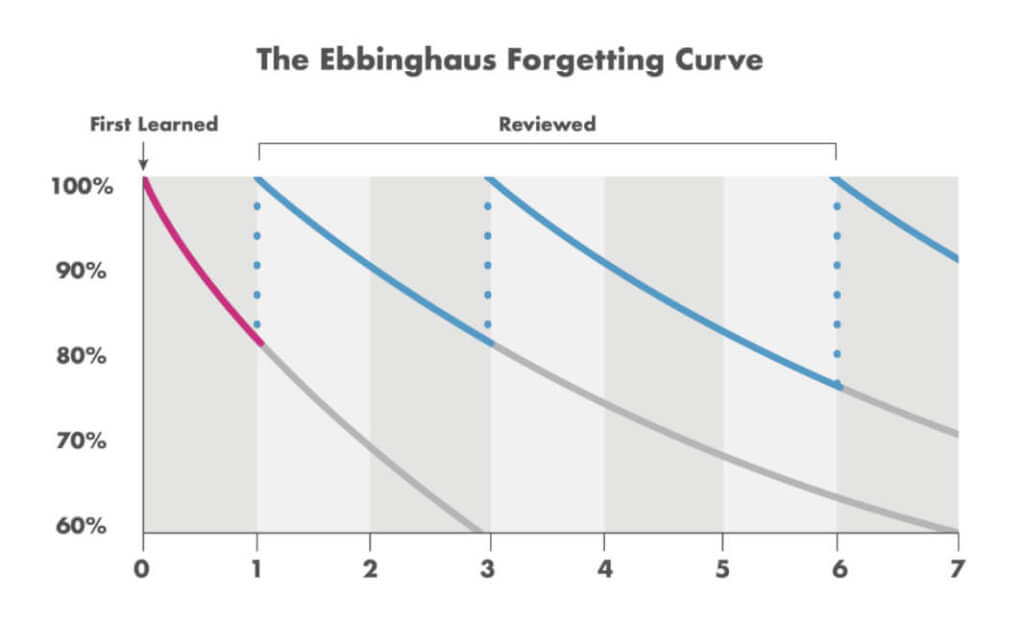Using the Training Podium: How to produce legal and compliance training that is transformative

Photo by Christina@wocintechchat.com on Unsplash
Before we start:
Untold Compliance Terminology
Nicole emphasizes the power of framing in her teaching.
The ‘Preframe’ sets the stage by influencing how people perceive and remember information, acting like a movie trailer to spark curiosity.
The ‘Postframe’ reinforces key takeaways and action items, aiding retention.
Nicole delves into the science behind these framing techniques in her book “Told: How in-house legal and compliance professionals secure airtime, gain traction and transform organisations”.
You will see these methodologies used in all her articles and teachings.
The Preframe
Have you ever wondered if your legal or compliance training or course is really working? Is it really worth all the effort?
The answer is to look at what ‘working’ means to you?
What does your success look like? Do you want people to learn something new or do you want people to have an entire shift in mindset?
In this article discover:
- The importance of understanding the different learning outcomes through the Training Podium™ developed by Untold Compliance™.
- The science of gaining trust and why it’s so important to understand for effective legal and compliance training.
- How to build immediate trust in order to relate our content to our audience.
The Training Podium™
I want to differentiate between providing a learning experience and a transformative experience. To illustrate this, I developed the Training Podium.
There are three different stages in the Training Podium; silver, gold and platinum.

1. Awareness Training
This is focused on creating consciousness and recognition. Its job is not to equip people with practical skills but to foster understanding about a given topic. For example, awareness of a Speak Out hotline. This information is forgettable without repetition.
2. Skills Training
It involves taking in new information and processes. It’s typically focused on developing specific skills or competencies. It is likely that they will have some ‘ah ha’ learning moments. However, ultimately the information becomes forgettable, unless we ensure that our learners constantly review. An example could be to train people on how to use a particular system that they will reuse over time, so that they remember it. Information is forgettable without review.
3. Transformational Training
When we transform our learners, they take on a whole new meaning of and identify with the topic. It involves a fundamental change in mindset, behaviors, and sometimes even the individual’s identity or purpose. The goal of transformation is to bring about a significant and often radical shift in how an individual thinks, approaches challenges, and perceives themselves and the world. The topic becomes unforgettable because it is linked to an entirely new identity. An example of when we want people to be transformed is in how they approach a particular topic that involves identifying and decision making, such as how they respond to potentially being offered a bribe.
This training is unforgettable.
Awareness and training are often components of transformation, but in isolation they will not lead to transformation.
In other words, it’s the difference between:
- Awareness: Having an awareness at the time but forgetting unless they have constant reminders.
- Skills: ‘Getting it’ during and directly after the training but it then slowly fading; or
- Transformation: Identifying with how the training relates to their lives and applying it for years to come.
When it comes to legal and compliance, I am always striving for transformation.
Two years later
I received a call from a compliance officer I had worked with. “Nicole, your training worked!” said the excited officer.
She explained that two employees had refused to pay a facilitation payment (small cash sum to a public official) at the airport in Laos. She further explained they used the tools in the workshop session I had run on saying no to bribery and corruption. This in itself was not that amazing.
What was amazing is that the feedback came two years after the workshop I ran. That’s 24 months or 102 weeks or 730 days or 5,840 days or 140,160 hours.
The Forgetting Curve
German psychologist Hermann Ebbinghaus did several experiments to demonstrate that memories weaken overtime and that there is a significant drop in retention shortly after learning something if we do not do something to reinforce the learning. This research resulted in the Ebbinghaus Forgetting Curve.
You will see that we forget most of what we learn within just 3 days unless we review it frequently.

If we apply this statistic to annual training, people will recall the training for around 10% of the year. So how was it that the training I put on was able to exceed his curve by 1,946 days when we did not follow up or ask learners to review what they had learned outside of the training?
And did I mention that I ran the workshop in person in Laos and did not speak a word of the language! A translator was present through all of it. So why did the training work so well in a foreign language with no review or follow up 5,840 hours after they had participated in the session with me?
I believe it was down to two factors: trust and relatability.
Trust me, trust is important.
“Trust is not always spoken but it is always earned.”
“I don’t trust him/her”.
“I trust that what you are saying is correct.”
“I trust you.”
“I don’t trust this new way of working. It doesn’t feel right.”
“Trust me I’ve done this before.”
Trust me, trust comes up all the time in our lives. Whether it’s the obvious (as above) or the implied. We need it.
- Trust is why we order the same food from a restaurant each time. We trust it will turn out the way we want it to. Why take the chance on an untrusted meal!
- Trust is why people tend to only commit to buying a property once they have had sight of a building a pest inspection. We trust that we know enough to buy it. Despite the fact that trust me, we never really do!
Trust is not always spoken but it is always earned. It’s the result of something we think, feel, see, or do. It’s evidence that ‘this is ok’. And it’s something that is critical when we are training people.
- People need to trust us to make the best use of their time.
- People need to trust us that we are here to support their learning.
- People need to trust that they can speak openly and ask questions.
Trust is the key to a successful workshop. But don’t just take my word for it.
The science of gaining trust
Hundreds if not thousands of articles and books have been written about this topic. There has been extensive research conducted and it would not be over the top to say that trust in the workplace is not just a topic but an industry.
I could not possibly do this topic justice. So, I am going to briefly talk about some key workplace principles rooted in human biology, psychology, and social dynamics, which we can benefit from examining to bring into our training.
I would be remis if I did not start with the Godfather of organizational development, Stephen Covey who wrote this book, The Speed of Trust’. In this he emphasizes the role of trust in improving productivity, relationships, and overall success in organizations.
Let’s breakdown how trust works in our body and how it turns into how we work by ourselves and with others.
1. It starts in our brain: We release the wonderful hormone, oxytocin. Oxytocin is often referred to as the ‘bonding hormone’ because it plays a role in social bonding and trust-building. When people trust one another, their brains release oxytocin, reinforcing social connections. This leads on to the next point.
2. It helps us to feel psychologically safe so we feel we can participate. Harvard Professor Amy Edmondson2, has shown that when people feel safe to express their thoughts, concerns, and ideas without fear of retribution or humiliation, it leads to increased trust. This promotes open communication, innovation, and (our next point) teamwork.
3. It supports effective collaboration. We can engage in healthy dialogue and work together to find solutions. According to Patrick Lencioni in his book, “The Give Dysfunctions of a Team”, teams with high levels of trust tend to perform better because team members are more willing to collaborate, share information, and support one another. This is essential in a training environment, where we have complex grey case studies where we need people to share their perspectives in a safe environment.
How to build immediate trust
In the workshop in Laos, I built trust people’s trust right at the outset. After a brief introduction about me and about how the workshop would run, I went to the front door of the workshop and tore down the sign “Compliance Workshop”. On the whiteboard I wrote: “How we work!”
People’s frowns and anxious looks immediately turned to smiles. They understood what I meant. This was not something that was separate to their roles, but about them. Also, what I didn’t know at the time was that this group of people thought that they were in trouble and had to attend this workshop because of something that had done. That was not the case. Our objective was to bring them into the company wide compliance program and empower them with compliance tools.
Obviously, the removal of the name of the session in this way was intentional to make the point and to bring the audience closer to me from the beginning.
Relating to our audience
After the ‘tearing down’ gesture, and the smiles and warmth I felt in the room, I followed up with my first session, which I called ‘About your work’.
- I asked people to share their experiences and provide examples of what they have seen or heard. This was so powerful. It also appeared to be the first time they had been asked that question. They were only too willing to open up.
- I really listened to their stories and reflected back what they said shared using a whiteboard. But instead of just me writing on the whiteboard, I had them come up and write or even draw a point from their story. Having them use their own words and their own drawings was wonderful to watch.
- I related every single topic and every single point directly to the participants’ stories.
Throughout the two-day workshop I had two whiteboards; one I worked from and one with the participants’ stories from the first session. I went back to the first session whiteboard throughout the entire workshop and related everything that I was talking about to the stories they had shared.
Building immediate trust helped me create a safe and comfortable environment for participants to share their thoughts, ask questions, and express their concerns. This is so important in workshops, such as the one in Laos, that involve open discussion or sensitive topics, such as the realities of bribery and corruption in their environment.
Relating to our audience is foundational in facilitating an effective workshop. It enhances engagement, relevance, trust, and the overall learning experience.
When people feel that we understand their perspective and needs, they are more likely to trust our expertise and the information you’re presenting. This in turn means that they will invest in the learning experience more actively, even with a presenter who doesn’t speak their language! This means that they participate and pay attention.
Also, by relating our content to our audience:
- we can better adapt our message and delivery to the communication style and preferences of our audience, making it easier for people to understand and connect with the material.
- participants are more likely to retain and apply the workshop material. Application is essential for learning and is an incredible way to support learning and memory. This can lead to a workshop even years ago having a lasting impact on attitudes and behaviors of the participants.
How to say no session
But the best session in the workshop, that really showed how this ‘relating’ technique was transformational was when we collectively brainstormed ways to say ‘no’ to bribery and corruption that worked for their culture and environment.
And that brings me to the start of this chapter where two of the employees who had attended the entire workshop used the strategies that they had brainstormed two years earlier to successfully refuse to pay a bribe.
They were no longer learners. They were fully fledged graduates in the art of saying no to bribery and corruption.
Postframe
Key takeaways.
- Transformational training means your learners take on a new identity with the information and it therefore becomes unforgettable.
- Trust and relating to our audience creates a transformative and unforgettable training experience.
- Building immediate trust helps create a safe and comfortable environment for participants to share their thoughts, ask questions, and express their concerns. This is so important in workshops that involve open discussion or sensitive topics, such as the realities of bribery and corruption in their environment.
- When people feel that we understand their perspective and needs, they are more likely to trust our expertise and the information we are presenting. This in turn means that they will invest in the learning experience more actively.
- Relating to our audience is foundational in facilitating an effective workshop. It enhances engagement, relevance, trust, and the overall learning experience.
Actions Items
- Consider a topic you want people to know about. Using the Training Podium consider your outcomes for the topic.
- Think about the titles you give your workshops and the reactions you might receive to them before you send the invite. What title would resonate with your audience and what might be off-putting?
About Untold Compliance
Untold Compliance is the creation of me, Nicole Rose.
I am a UK and Australian qualified lawyer and an artist. I have spent the past twenty years working with global organisations transforming legal and compliance programs using training, engagement, creativity, and communication strategies.
Working with employees, executives, and boards in complex legal and compliance global environments in mining, banking, tech, education, retail, non for profit and insurance, I have firsthand experience of what works to transform legal and compliance from a program to a culture.
The great news is that the principles of effective communication and training strategies that we share in Untold Compliance are applicable whatever your size, industry, culture or, country.
Untold action items
To uplevel your legal or compliance program through a customer centric approach to training and communications, there are three things you can do:
- Read: Get on the list to be the first to read Told, How in-house legal and compliance professionals secure airtime, gain traction and transform organisations.
- Learn with me Find out how you and your team can utilize the Frame Training Method™ to power all your legal and compliance training and communications.
- Let us do it for you: Contact me to learn about how I can support your organization with training and communications to power your legal or compliance program.
Just click here to share what you are interested in learning more about. Feel free to tick all three.
And if you liked what you read, I would love to hear your feedback. Please send me an email at nicole@untoldcompliance.com.
Click here to check our Terms and Conditions.

